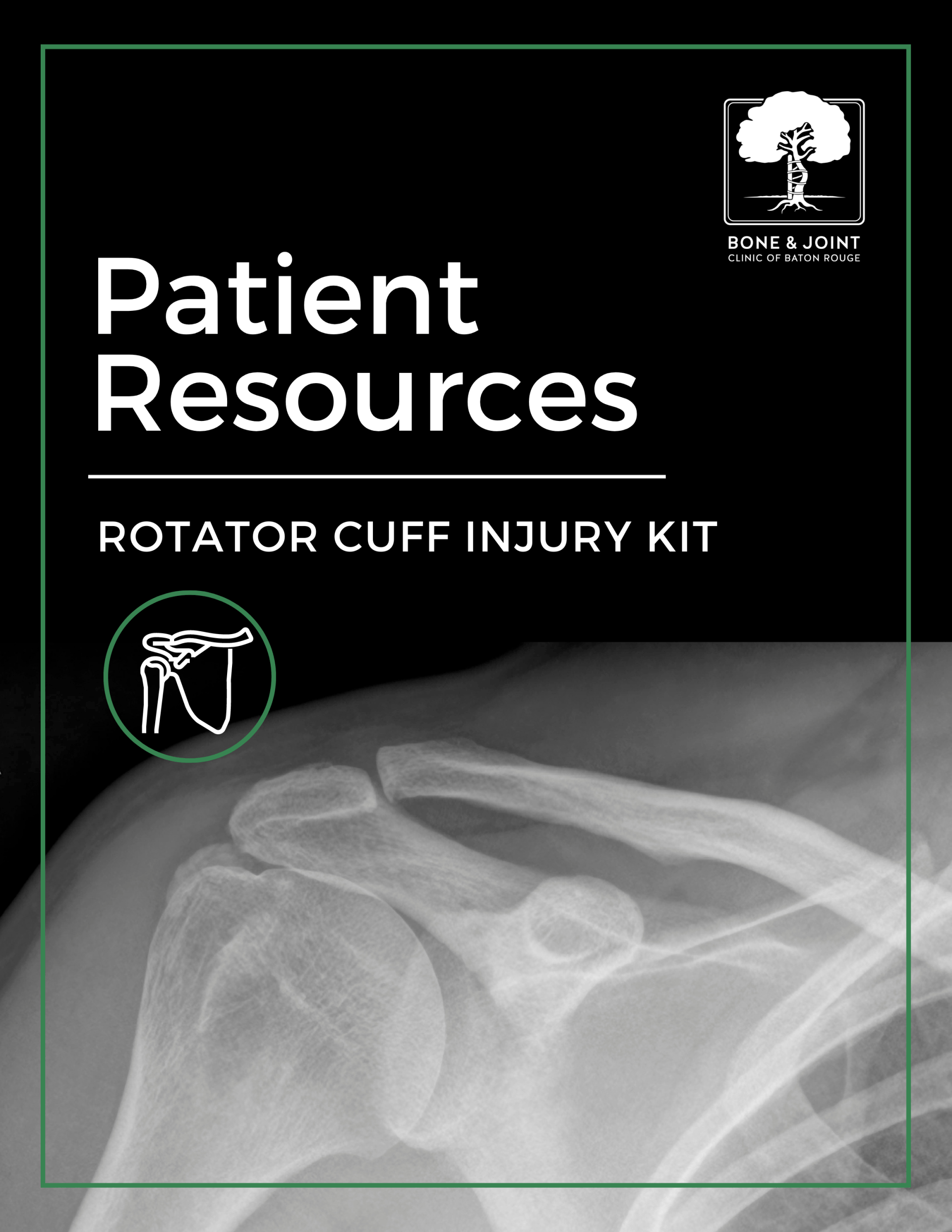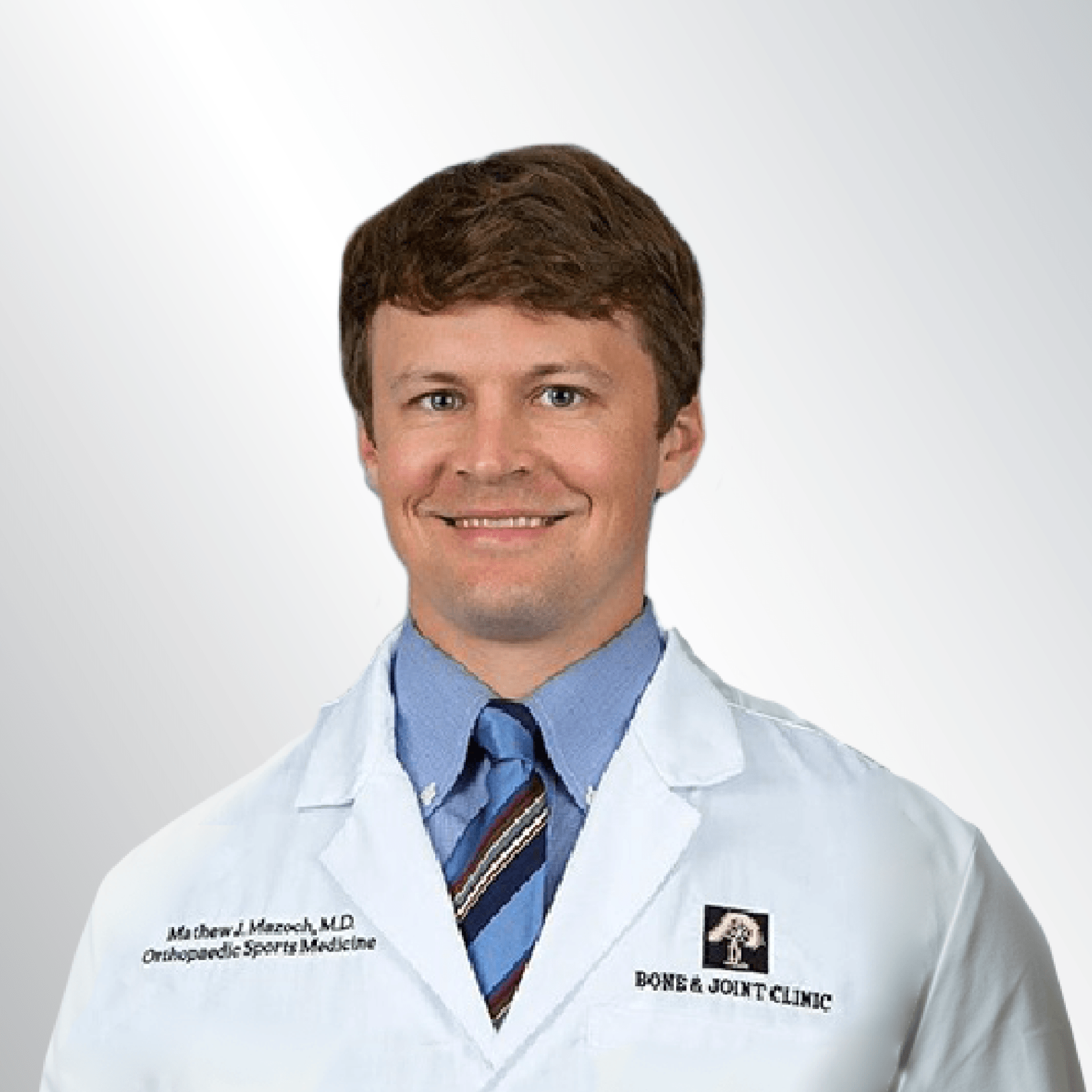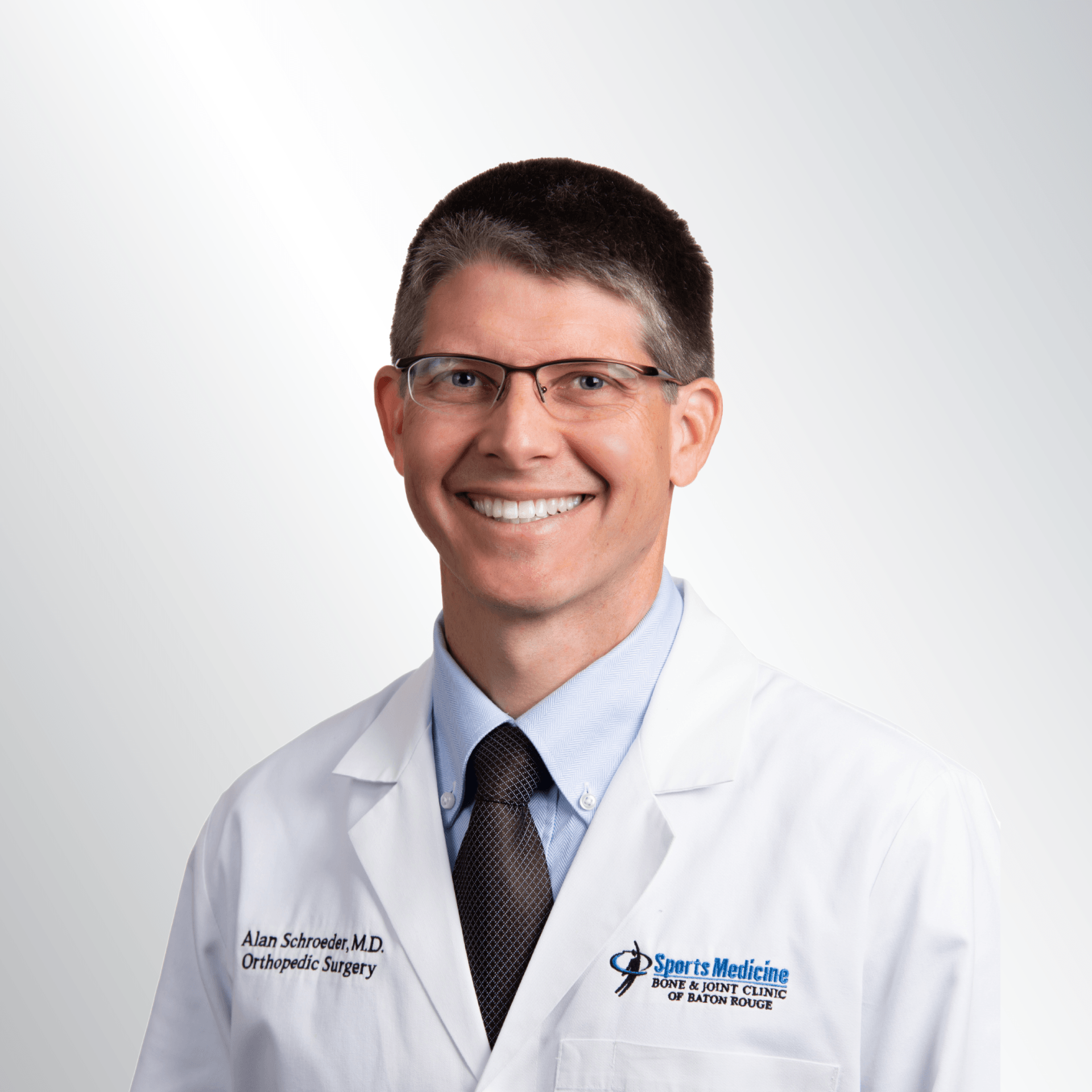Baton Rouge Rotator Cuff Specialists
Anatomy and Function of the Rotator Cuff
The rotator cuff is comprised of a group of four muscles and four tendons that surround, protect and stabilize the shoulder joint. It plays a critical role in shoulder movement and functionality, providing a full range of pain-free arm movement when healthy.
Rotator Cuff Injury Types & Causes
Shoulder pain is one of the most common reasons patients seek medical attention each year, and rotator cuff injuries are often the source. Generally, these injuries are in of the following four forms:
- Tendonitis - The mildest form of rotator cuff injury, tendonitis is inflammation of the tendons due to impingement - the entrapment and compression of tendons with certain movements.
- Bursitis – Also a result of shoulder impingement, bursitis is the inflammation of the bursa, or fluid-filled sacs that serve to reduce friction within the shoulder.
- Tendinosis – The degeneration of a tendon without the presence of inflammation.
- Tears – Full or partial tears in the tendons of the rotator cuff due to either acute injuries or those that develop over time.
The underlying cause of such injuries can usually be isolated to one of the following three:
- Acute injury from a single traumatic event
- Repetitive Strain or Overuse
- Age-Related Degeneration
How We Treat Rotator Cuff Injuries
Our aim when treating rotator cuff injuries is to utilize therapies that are the most effective in healing the injury and relieving symptoms while also causing minimal disruption for the patient. In many cases, this can be accomplished using non-surgical methods such as nonsteroidal anti-inflammatories (NSAIDs) or steroidal injections for pain relief and physical therapy. In others, surgical repair may be necessary. Fortunately, the arthroscopic repair preferred by most surgeons today offers patients many benefits:
- Minimally Invasive - Whereas older techniques included one large incision and detachment of the deltoid muscle,
arthroscopic shoulder repair uses several small incisions at precise locations, specialized surgical instruments, and a camera, or arthroscope, that allows the surgeon to access the shoulder from all angles.
- Outpatient - Because of its minimally invasive nature, arthroscopic repair is nearly always performed in an outpatient facility such as Orthopedic Surgery Center of Baton Rouge. This allows patients to return home the same day and also provides significant cost savings.
- Shorter Recovery Time - Arthroscopic repair greatly improves on both the pain and risk of infection associated with older techniques. Patients are thereby able to heal more quickly and return to day-to-day tasks sooner.

Download the Rotator Cuff Patient Kit today
All Rotator Cuff resources in one place.
Discover the benefits of the Rotator Cuff procedure
Severe impingement or tendinitis can result in a tearing of the rotator cuff. The rotator cuff is a network of muscles and tendons that attaches the upper arm to the shoulder blade. When these muscles and tendons are damaged or inflamed, it can become painful. Treatment follows a conservative approach for impingement with further diagnostic testing such as MRI if indicated. A discussion of the risks, benefits and alternatives of rotator cuff tear treatment helps the patient decide if they want non-operative treatment, open repair or arthroscopic repair for the rotator cuff.
Rotator Cuff Specialists in Baton Rouge
RELATED READING





